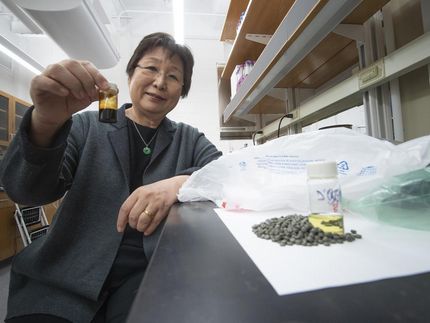Flame retardant linked to altered thyroid hormone levels during pregnancy
Pregnant women with higher blood levels of a common flame retardant had altered thyroid hormone levels, a result that could have implications for fetal health, according to a new study led by researchers at the University of California, Berkeley.
"This is the first study with a sufficient sample size to evaluate the association between PBDE flame retardants and thyroid function in pregnant women," said the study's lead author, Jonathan Chevrier, a UC Berkeley researcher in epidemiology and in environmental health sciences. "Normal maternal thyroid hormone levels are essential for normal fetal growth and brain development, so our findings could have significant public health implications. These results suggest that a closer examination between PBDEs and these outcomes is needed."
PBDEs, or polybrominated diphenyl ethers, are a class of organobromine compounds found in common household items such as carpets, textiles, foam furnishings, electronics and plastics. U.S. fire safety standards implemented in the 1970s led to increased use of PBDEs, which can leach out into the environment and accumulate in human fat cells.
Studies suggest that PBDEs can be found in the blood of up to 97 percent of U.S. residents, and at levels 20 times higher than those of people in Europe. Because of California's flammability laws, residents in this state have some of the highest exposures to PBDEs in the world.
"Despite the prevalence of these flame retardants, there are few studies that have examined their impact on human health," said the study's principal investigator, Brenda Eskenazi, UC Berkeley professor of epidemiology and of maternal and child health. "Our results suggest that exposure to PBDE flame retardants may have unanticipated human health risks."
The new study, published in the journal Environmental Health Perspectives , is the second study to come out this year from Eskenazi's research group linking PBDEs to human health effects. Eskenazi was the principal investigator on the earlier study that found that women with higher exposures to flame retardants took longer to get pregnant.
In the new study, the researchers analyzed blood samples from 270 women taken around the end of their second trimester of pregnancy. The women in the study were part of a larger longitudinal study from the Center for the Health Assessment of Mothers and Children of Salinas (CHAMACOS) that examines environmental exposures and reproductive health.
The researchers measured concentrations of 10 PBDE chemicals, two types of thyroxine (T4) and thyroid-stimulating hormone (TSH). They controlled for such factors as maternal smoking, alcohol and drug use, and exposure to lead and pesticides.
Analysis focused on the five PBDE chemicals that were detected most frequently and are components of a mixture called pentaBDE. The researchers found that a 10-fold increase in each of the PBDE chemicals was associated with decreases in TSH ranging from 10.9 percent to 18.7 percent. When the five PBDEs were analyzed together, a tenfold increase was linked to a 16.8 percent decrease in TSH.
The study did not find a statistically significant effect of PBDE concentrations on levels of T4. With one exception, all the women in the study with low TSH levels had normal free T4 levels, which corresponds to the definition of subclinical hyperthyroidism. The study found that odds of subclinical hyperthyroidism were increased 1.9 times for each tenfold increase in PBDE concentrations.
Exactly how flame retardants influence TSH levels is unclear, the researchers said, but animal studies have shown that certain PBDEs can mimic thyroid hormones.
Topics
Organizations
Other news from the department science

Get the chemical industry in your inbox
By submitting this form you agree that LUMITOS AG will send you the newsletter(s) selected above by email. Your data will not be passed on to third parties. Your data will be stored and processed in accordance with our data protection regulations. LUMITOS may contact you by email for the purpose of advertising or market and opinion surveys. You can revoke your consent at any time without giving reasons to LUMITOS AG, Ernst-Augustin-Str. 2, 12489 Berlin, Germany or by e-mail at revoke@lumitos.com with effect for the future. In addition, each email contains a link to unsubscribe from the corresponding newsletter.
Most read news
More news from our other portals
Last viewed contents

We Wouldn’t Be Able to Control Superintelligent Machines - Would the AI cure cancer, bring about world peace, and prevent a climate disaster? Or would it destroy humanity and take over the Earth?
LyondellBasell to Close LDPE Unit at Carrington, U.K.

Rudolph Logic Systems GmbH - Sarstedt, Germany

Challenging counterfeit products with rare earths - New marking technique could halt product piracy
Merck KGaA and Nano-Terra Announce Extension of Nanotechnology Solutions Alliance





























































